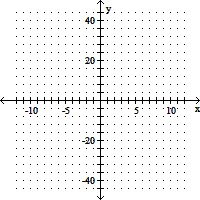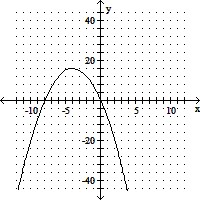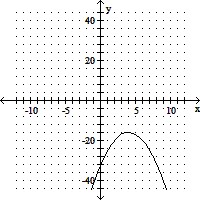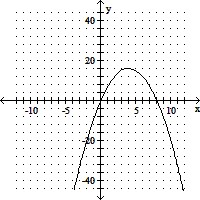Simplify. Express in terms of i.2 + 
A. 2 - 9i
B. 11 + i
C. 2 + 9i
D. -7
Answer: C
You might also like to view...
Find the domain of the function h.h(x) = 
A. {x| x is a real number and x ? -9 and x ? -7 and x ? 7} B. {x| x is a real number and x ? 9 and x ? -7 and x ? 7 and x ? 0} C. {x| x is a real number and x ? -7 and x ? 7} D. {x| x is a real number and x ? 0}
Use the two-stage method to solve.Find x1 ? 0 and x2 ? 0 such that 3x1 + 4x2 ? 48 3x1 + 4x2 ? 60and z = 6x1 + 7x2 is maximized.
A. x1 = 6, x2 = 12, z = 120 B. x2 = 15, x1 = 0, z = 105 C. x1 = 20, x2 = 5, z = 155 D. x1 = 20, x2 = 0, z = 120
Find the part.30% of 1200 weight loss programs
A. 36 weight loss programs B. 36,000 weight loss programs C. 3600 weight loss programs D. 360 weight loss programs
Graph the quadratic function. Determine the vertex, find the equation of the axis of symmetry, find any x- and y-intercepts, and state the domain and range in interval notation.f(x) = -x2 - 8x
A. vertex: (-4, 16)
axis of symmetry: x = -4
x-intercepts: 0 and -8; y-intercept: 0
domain: (-?, ?); range: (-?, 16]
B. vertex: (4, -16)
axis of symmetry: x = 4
x-intercept: none; y-intercept: -32
domain: (-?, ?); range: (-?, -16]
C. vertex: (-4, -16)
axis of symmetry: x = -4
x-intercept: none; y-intercept: -32
domain: (-?, ?); range: (-?, -16]
D. vertex: (4, 16)
axis of symmetry: x = 4
x-intercepts: 0 and 8; y-intercept: 0
domain: (-?, ?); range: (-?, 16]